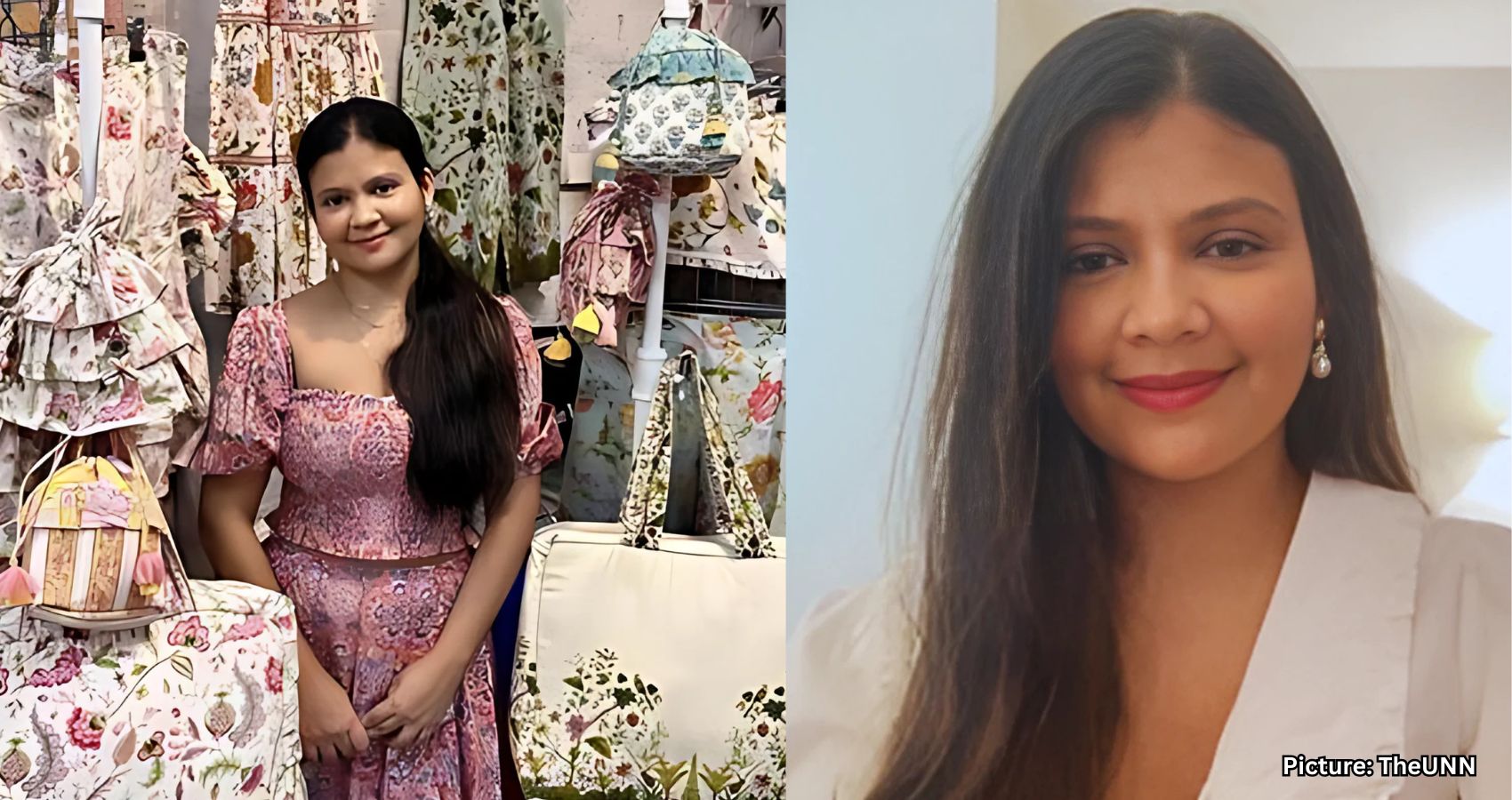Devika Jadhav’s fashion brand Amaya merges Indian textile traditions with Western design, promoting sustainability and artisan recognition from her New York City apartment.
In the fast-paced world of New York City fashion, where trends can change overnight, Devika Jadhav stands out with her brand, Amaya. Operating from her modest 900-square-foot apartment, Jadhav manages every aspect of her business—from design to production and marketing. Her mission is ambitious: to blend Indian textile traditions with Western silhouettes while advocating for natural fabrics and the artisans who create them.
“I really wanted to pick up these two very strong pieces of my own identity, which was the East and the West, and come up with a sort of dialogue between the two,” Jadhav explains. “What I’m doing is using the arts and crafts of India and mixing them with Western silhouette design aesthetics. That’s how Amaya was born.”
Jadhav’s journey began in Nimgaon Jali, a small village near Nasik, India, which is difficult to access due to its lack of railway connections. “We moved to Mumbai when I was very young, but I’d go back every vacation. It’s still a part of me,” she reflects.
Her frequent visits to Nimgaon Jali, combined with a childhood spent among fashion enthusiasts, greatly influenced her aesthetic sensibility. “My mom and my aunts were all saree connoisseurs. Discussions about Indian textiles and arts and crafts from across India were very common in our house. That helped me grow an appreciation for the variety of arts and crafts that exist in India,” she says. “We have such a rich textile history.”
Jadhav’s fascination with textiles led her to study at the London College of Fashion, where she began to notice a disconnect between the fashion industry and the craftsmanship she had grown up admiring. “There are these two huge powerhouses of fashion—East and West—but they don’t really communicate. The only communication between these two worlds is very transactional. When it comes to manufacturing, there’s no sharing of ideas or sharing of crafts,” she notes.
This realization became the conceptual foundation of her womenswear label. The name Amaya, which means “free from illusion” in Sanskrit, “night rain” in Japanese, “the end” in Basque, “high place” in Arabic, and “God’s promise” in Hebrew, reflects her vision for the brand.
The pivotal moment for Jadhav came in 2023 when she relocated to the United States. As a consumer, she found herself frustrated by the scarcity of fully natural fabrics. After surveying over 250 people and researching available materials, she identified a significant gap in the market.
<p“A lot of the brands would have a cotton outer shell, but the lining that they would use would be synthetic, so it defeats the purpose. Or they would have blends, like a little bit of cotton with polyester. So there was always some compromise,” she explains.
Determined to address this issue, Jadhav conducted extensive research into fabric quality and established partnerships with Indian artisans. In Jaipur, she collaborated with artisans to develop unique embroidery and block printing techniques. This collaboration also involved artistic reinterpretations of ancient designs, such as 16th-century chintz prints and Mughal motifs. “We hand-painted it, created some beautiful sets of prints that we then made into digital prints,” she shares. “They’re all India-inspired, and they all have a very special story that has made it a lot more magical.”
Amaya’s production process is rooted in sustainability and ethical labor practices. Each piece is produced in small batches—typically just 15 per style—to minimize waste and overstock. For instance, jackets may require 25 to 30 hours of intricate hand-crafted embroidery, with artisans employing multi-generational techniques to create 3D flowers or pearl embellishments. Jadhav emphasizes the importance of fair treatment for artisans: “It’s not enough just to give credit where it’s due. We need to make sure that our artisans are taken care of… We’re not overworking them. We’re making sure they’re well taken care of in terms of the amount of money that they are making.”
For Jadhav, the artisans are the unsung heroes of the fashion industry who often go unrecognized. She cites the recent controversy involving Kolhapuri chappals and a luxury brand as an example of the need for greater acknowledgment of traditional craftsmanship. “They deserve so much recognition for the amount of hard work and skill that they have been practicing for generations,” she asserts.
Jadhav is equally committed to Amaya’s cultural mission. “Nothing makes me happier than speaking to a consumer, talking about block prints, or discussing our arts and crafts, and spreading awareness about the value behind our work,” she says. “Hopefully, [the pieces] will last for a much longer period of time in their wardrobe, rather than being discarded.”
This authenticity is central to her brand narrative. “We already have such a rich history and culture; why not show it off? Why not talk about it?” she asks.
Sustainability is another guiding principle for Jadhav, though she acknowledges the challenges involved. “I would say Amaya is a work in progress and working towards it,” she admits. As a small brand with limited resources, achieving sustainability can be costly. Nevertheless, Amaya implements a zero-waste policy by donating scraps for recycling, shipping orders plastic-free (except for garment wrapping, for which Jadhav is exploring alternatives), and favoring fabric-covered buttons. She envisions a future where she can track everything from pesticide use in cotton farming to transportation emissions in deliveries.
Looking ahead, Amaya is expanding through online sales, New York pop-ups, and an upcoming launch on the brand discovery platform ShopShops. Jadhav’s long-term vision is clear: to create a thriving, collaborative space where East and West coexist in every stitch, and where Indian artisans are recognized, valued, and celebrated on the global stage.
“The world is ready to hear our stories. The world is ready to accept us,” she concludes.
Source: Original article

